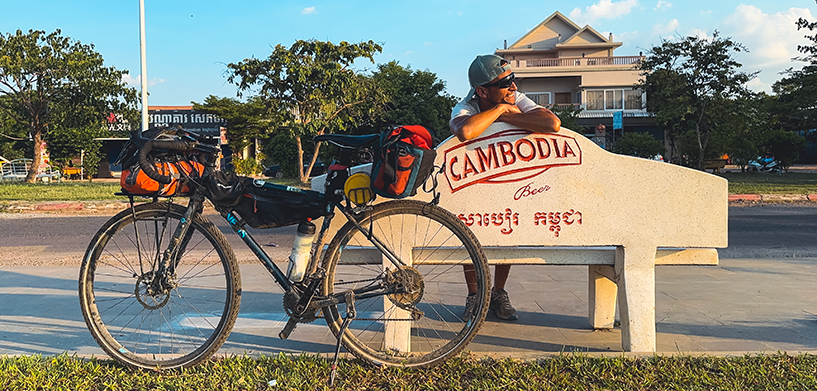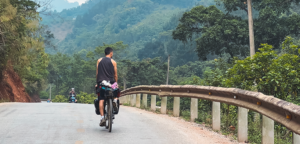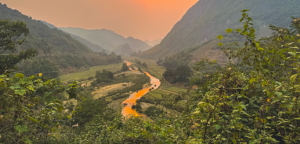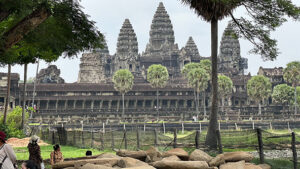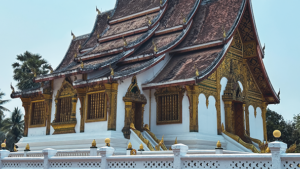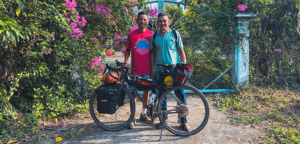Yohann Ly is a geospatial professional, serving as technical lead for Hexagon’s Safety, Infrastructure & Geospatial division in its Paris office.
In his free time, he likes to bike. His protestation that he’s “not really a cyclist,” seems a bit humble when you consider he just completed a seven-week bicycle trek across Southeast Asia.
Even more impressive, Ly combined the two passions by packing along a Leica BLK2GO mobile scanner and using it to scan and build digital twins of some of Southeast Asia’s most beautiful sites using Hexagon’s M.App Enterprise software solution.
Cycling across the rugged and often mountainous terrain of Vietnam, Laos, Thailand and Cambodia –- sometimes 8 hours a day in 40-degree Celsius heat (104 degrees Fahrenheit), Ly was on a mission to simultaneously showcase the native homeland of his family (who are Vietnamese) and highlight his employer’s impressive wares.
Ly planned to demonstrate that, even in the most secluded parts of the world, with extreme weather conditions and chaotic roads, he could create digital twins with HxGN solutions – from capture to processing and display.
Leica Geosystems, a subsidiary of Hexagon, created a “Where in the World is Yohann Ly?” campaign for social media, Hexagon prepared to chronicle his travels on its social platforms, and off he went, posting pictures of glorious red sunsets and breathtaking scenes on Instagram stories for his followers.
He rode through the countryside and on mountains, waking before dawn to be the day’s first visitor at historic and sacred sites like the remarkable Temple of Literature in Hanoi, Vietnam’s first university. At nearly 1,000 years old, the temple was built under the reign of King Ly Thanh Tong and dedicated to Confucius, as well as other historical scholars.
Ly also visited, scanned, and mapped the subterranean hideout known as the Vieng Xai Caves, which served as a base for the Lao People’s Liberation Army during Laos’ revolution during the mid-20th century.
In Cambodia, he scanned the massive Angkor Wat, a temple complex in Cambodia that, at 162 hectares, is considered the largest religious site in the world.
Ly found dozens of amazing places of beauty and history to memorialize and digitize for posterity, but he also took the time to get to know the people along the way. At many stops along the four-country, seven-week trip, he would befriend a local person, who would invite him to stay at their home and share their meals.
Ly, with deep Vietnamese roots, spoke the language with the locals in Vietnam. But a language barrier was a factor when Ly crossed into Laos, Cambodia, and Thailand. Yet Ly’s easy smile and his genuine appreciation for his hosts and their culture won him many new friends and countless delicious meals and memories.
Ly and his hosts might’ve struggled to communicate with Google Translate or resorted to using hand signs. Still, respect and friendship are universal languages.
“First, they are looking at you as a bit strange. What does he want and so on? But most of the time after you share dinner, play together with the children, in the end, they are really happy to host a traveler like me because it’s an exchange,” Ly said.
Click here to see an interactive map of Yohann Ly’s travels created in M. App Enterprise.














